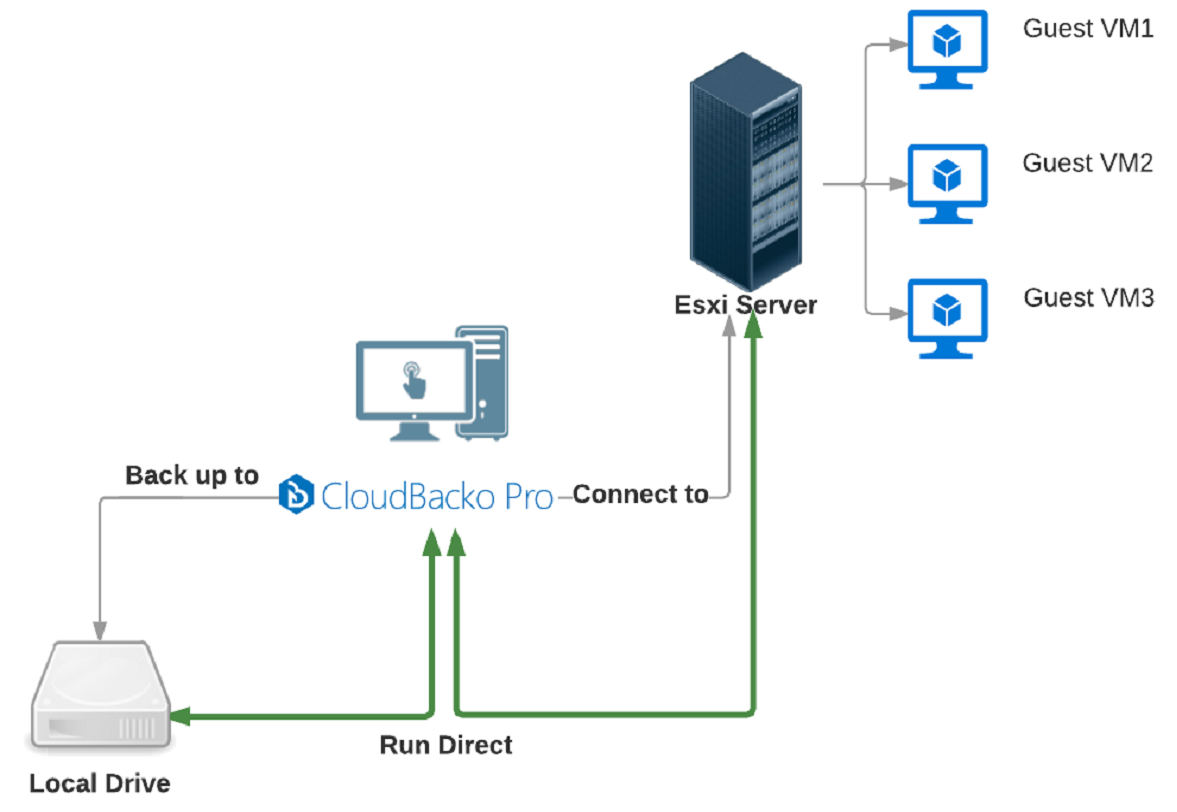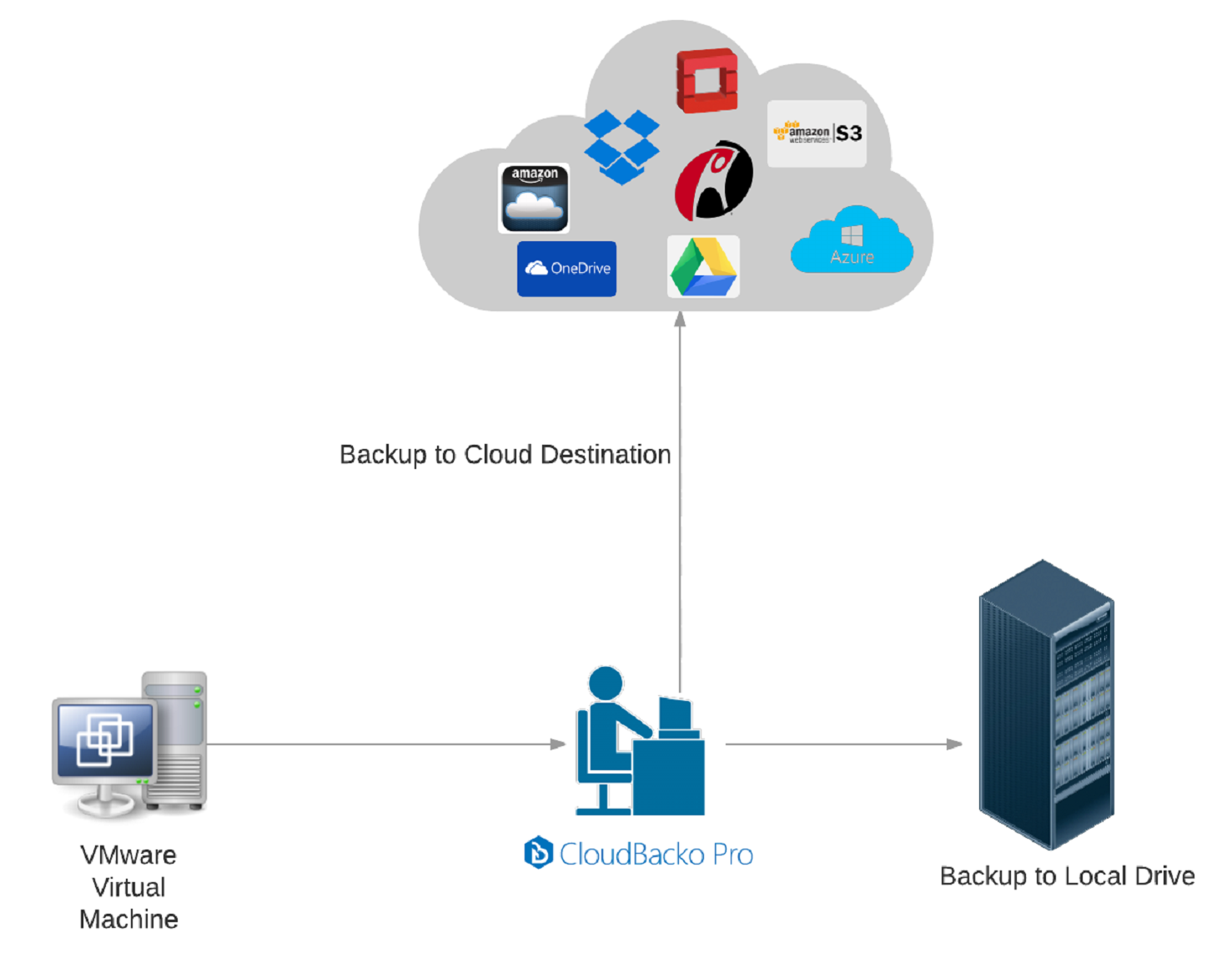User Tools
Sidebar
This is an old revision of the document!
Table of Contents
Overview
System Architecture
Below is the system architecture diagram illustrating the major elements involved in the backup process.
Backup Process
Instant VM Restore with Run Direct
What is Run Direct?
Run Direct is a feature that helps reduce disruption and downtime of your production VMs. Unlike normal VM restore procedure where a VM is extracted from backup files and copied to the production storage, which can take hours to complete. Restore with Run Direct can instantly power up a VM by running it directly from the backup files in the backup destination and the VM can be put into production.
How does Run Direct work?
When a Run Direct restore is performed, the backup destination is mounted as an NFS datastore from the VMware host, where the VM is run directly from the backup files.
The backup destination should be a local drive that can connect with CloudBacko Pro.

The restored virtual machine, at this stage (e.g. before the restore is finalized) is in a read-only state to preserve its integrity. All changes made to the virtual disks (e.g. operation within the guest virtual machine) are stored separately in transaction logs stored on the NFS datastore or the original datastore, depending on the setting selected. These changes are discarded when Run Direct is stopped, where the restored VM will be removed and all changes will be discarded, or the changes will be consolidated with the original virtual machine data when the restore is finalized.
Settings Differences between Run Direct and Non-Run Direct Backup Set on VMware
| Run Direct Backup Set | Non-Run Direct Backup Set | |
|---|---|---|
| Encryption | NO | YES |
| Compression | NO | YES |
| VDDK (CBT) | YES | YES |
| Local Destination | YES | YES |
| Cloud Destination | NO | YES |


